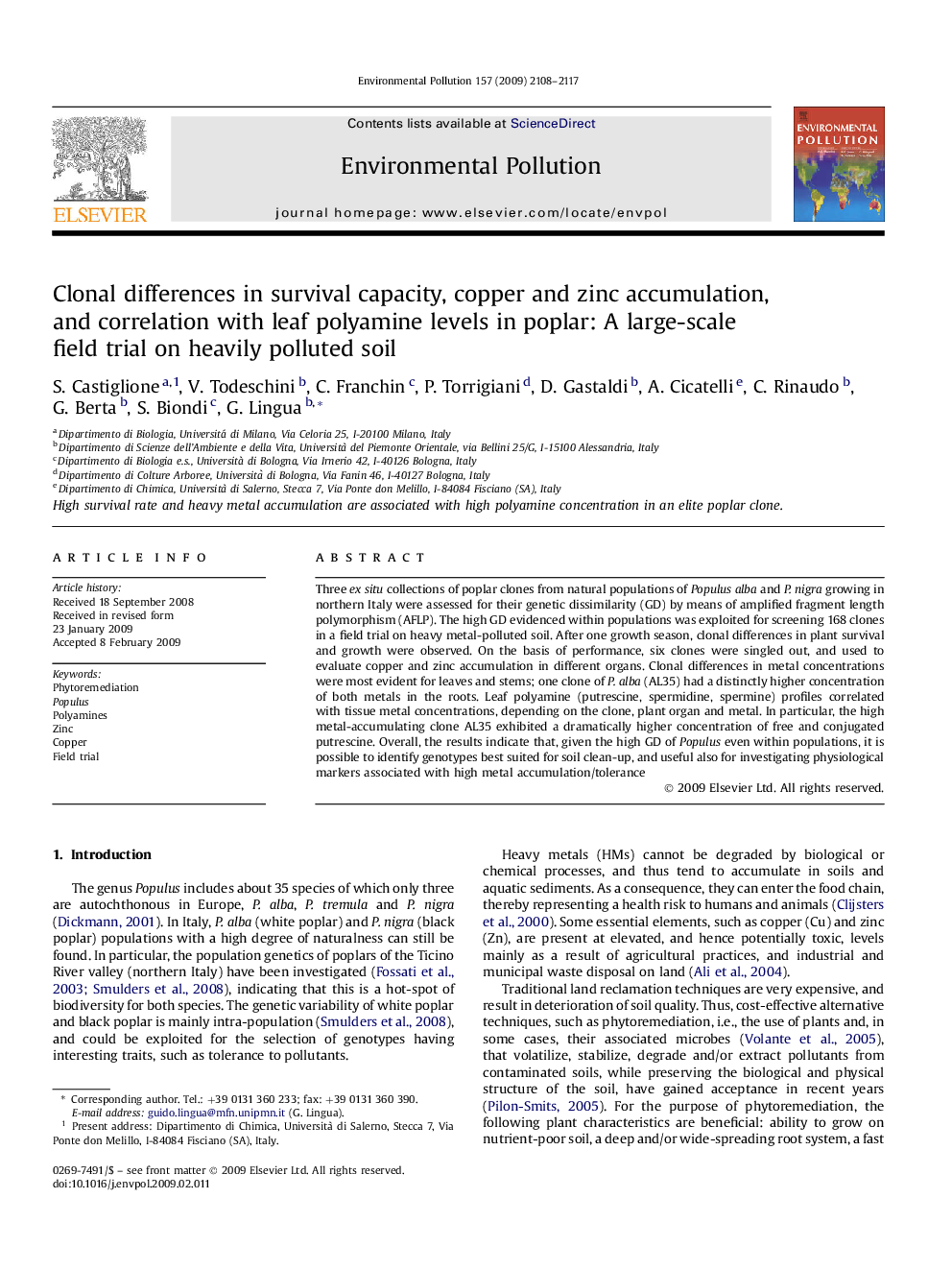| Article ID | Journal | Published Year | Pages | File Type |
|---|---|---|---|---|
| 4425411 | Environmental Pollution | 2009 | 10 Pages |
Three ex situ collections of poplar clones from natural populations of Populus alba and P. nigra growing in northern Italy were assessed for their genetic dissimilarity (GD) by means of amplified fragment length polymorphism (AFLP). The high GD evidenced within populations was exploited for screening 168 clones in a field trial on heavy metal-polluted soil. After one growth season, clonal differences in plant survival and growth were observed. On the basis of performance, six clones were singled out, and used to evaluate copper and zinc accumulation in different organs. Clonal differences in metal concentrations were most evident for leaves and stems; one clone of P. alba (AL35) had a distinctly higher concentration of both metals in the roots. Leaf polyamine (putrescine, spermidine, spermine) profiles correlated with tissue metal concentrations, depending on the clone, plant organ and metal. In particular, the high metal-accumulating clone AL35 exhibited a dramatically higher concentration of free and conjugated putrescine. Overall, the results indicate that, given the high GD of Populus even within populations, it is possible to identify genotypes best suited for soil clean-up, and useful also for investigating physiological markers associated with high metal accumulation/tolerance
